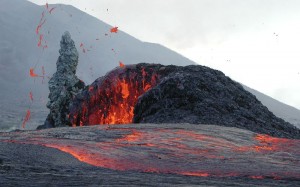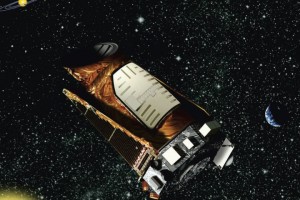Astronomers Say Planets Hospitable to Life May Be Common
Astronomers are continuing to collect findings on the possibilities of Earth-like planets from data collected from the now-crippled Kepler Space Telescope.
Scientists gathering for this week’s Kepler Science Conference in California say that a statistical analysis of the first three years of Kepler data suggests that most stars in our Milky Way galaxy have at least one planet.
And the analysis indicates that one in five stars similar to our sun may be home to an Earth-like planet orbiting in a temperate environment.
There are an estimated 100 billion stars in the Milky Way.
This so-called “habitable zone” is the distance from a star in which water can be found in liquid form on a planet’s surface.
That means, statistically speaking, the nearest sun-like star with an Earth-size planet could be only 12 light years away and visible with the naked eye, said University of California Berkeley graduate student Erik Petigura .
Astronomers from UC-Berkely and the University of Hawai`i have been using the Big Island’s Keck Observatory to analyze information from Kepler, which for four years monitored the brightness of more than 150,000 stars, looking for slight changes in their brightness suggesting the presence of orbiting planets.
Although it was announced in August that Kepler had lost a key aiming component, NASA said there is still more than a year’s worth of data remaining to be analyzed.
Its first three years of observing revealed more than 3,500 potential worlds.
UC-Berkeley astronomy professor Geoffrey Marcy cautioned that Earth-size planets in Earth-like orbits are not necessarily conducive to life even if they meet the requirement of not being too hot or too cold.
“Some may have thick atmospheres, making it so hot at the surface that DNA-like molecules would not survive,” Marcy said in a statement from Keck. “Others may have rocky surfaces that could harbor liquid water suitable for living organisms. We don’t know what range of planet types and their environments are suitable for life.”
Even rocky surfaces don’t indicate conditions favorable for life, as the astronomers noted last week in announcing the discovery of the first Earth-sized, rocky planet outside our solar system. They said that planet orbits so close to its star its surface temperature is likely about 2,000 Kelvin.
That’s more than 3,000 degrees Fahrenheit, considerably hotter than magma from Kilauea volcano.

A recently discovered planet orbits so close to its star its surface temperature is hotter than Kilauea’s lava. Photo of Pu`u `O`o lava by C. Heliker/HVO.
To determine the likelihood of planets that could possibly sustain life as we know it, the Keck astronomers focused on 42,000 stars similar to our sun, and found 603 candidate planets orbiting them. Of those, 10 were Earth-sized and located in the habitable zone.
They then used computer algorithms to measure how many of the latter were missed. Petigura also inputted fake planets into the data to see which ones his program could detect and which it couldn’t.
“What we’re doing is taking a census of extrasolar planets, but we can’t knock on every door,” Petigura said. “Only after injecting these fake planets and measuring how many we actually found, could we really pin down the number of real planets that we missed.”
Accounting for missed planets, as well as the fact that only a small fraction of planets are oriented so that they cross in front of their host star as seen from Earth, allowed them to estimate that 22% of all sun-like stars in the galaxy have Earth-size planets in their habitable zones.














